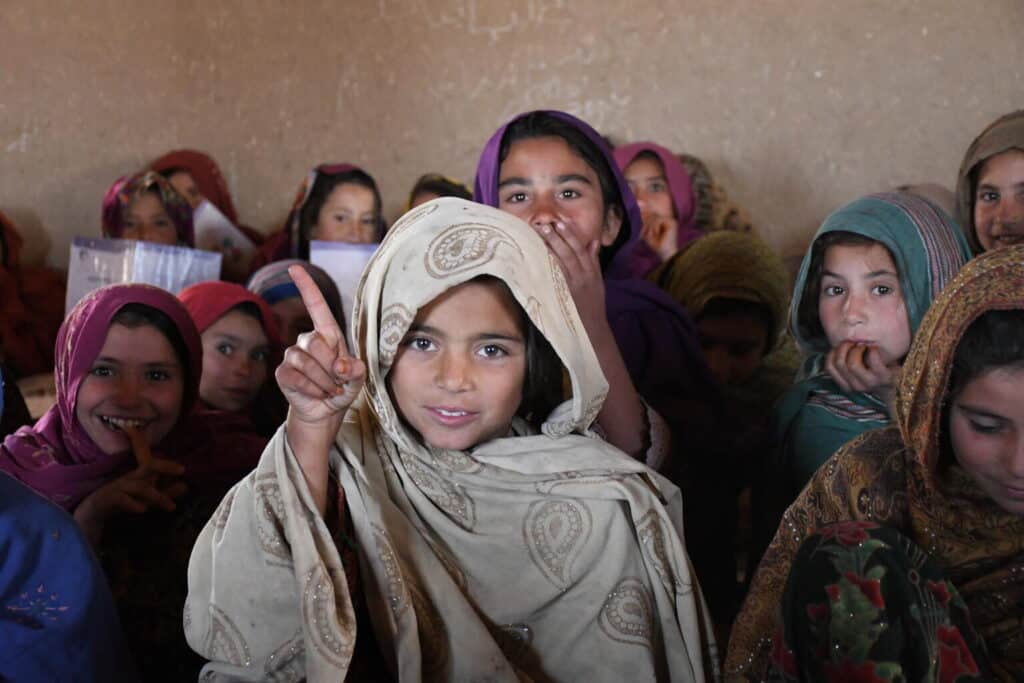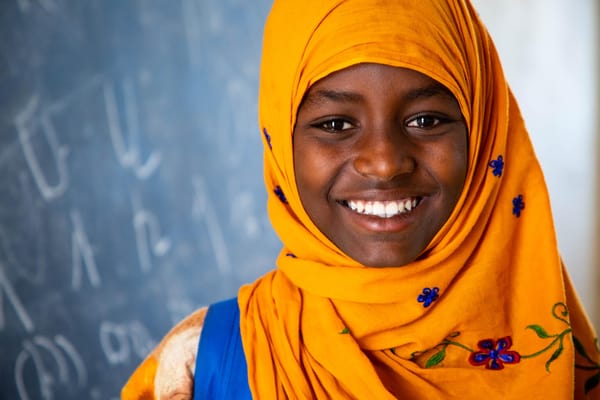Reflections from the 2022 International Migration Review Forum (IMRF)
Around the world, millions of children are on the move. This movement is happening to, from or across nearly every continent. Many are facing extreme rights violations – such as limited access to food, shelter and basic services like health care and education – and are commonly exposed to violence, exploitation and abuse.
- 1 in 8 migrants is a child
- 35.5 million international migrant children around the globe
- 36.5 million children displaced from their homes due to conflict, violence and other crises at the end of 2021[1]
- 13.7 million were child refugees and asylum-seekers
- 22.8 million were internally displaced[2]
Data on the number of children on the move – a term that includes all children who migrate or are displaced within or between countries, with or without a parent or caregiver – are very limited. In many cases, we know very little about these children: who they are, where they are and if their right to well-being is being upheld. Without better data, migrant and displaced children and their often difficult circumstances will remain hidden from policy- and decision-makers, and their rights will continue to be violated.
Data and our commitments to children
Reliable, accurate and timely data are foundational to upholding children’s rights. Data are key to achieving the Sustainable Development Goals and ensuring no child is left behind. In the context of migrant rights, the Global Compact for Migration (GCM), the first intergovernmentally negotiated agreement to cover all dimensions of international migration, recognizes the collection and utilization of accurate and disaggregated data as a basis for evidence-based policies and programmes. But to date, national statistical systems are still largely unable to deliver on the promise to produce better data for children,[3] including for those on the move – even though many face intense insecurities.[4]
Including children’s needs in data work
In May 2022, Member States and partners from around the world gathered at the inaugural International Migration Review Forum (IMRF) to review progress made toward the GCM’s vision of a safe, orderly and regular migration for all. The event provided an important opportunity for stakeholders engaged in upholding the rights of migrant children to highlight the need for improved data in order to implement the GCM.
As the International Data Alliance for Children on the Move (IDAC) highlighted in a brief published during the event, “children on the move, and the specifics of their data needs, have been notably missing” from data-related conversations in the framework of the GCM.[5] IDAC urged the GCM community – especially Member States – to prioritize children’s data needs and uphold their commitments through five key strategies.
Pledges for data
The IMRF showed that momentum is growing to improve migration data: “…participants suggested to enhance data collection and disaggregation efforts”.[6] Before, during and after the event, Member States, UN agencies, the EU and civil society organizations were invited to make pledges to contribute to GCM implementation and achieve its objectives. Of the 189 pledges submitted through the UN Migration Network to date,[7] 76 relate to Objective 1 (improving migration data) and/or child-sensitivity.
Noteworthy commitments
Iraq pledged to continue using the same migration governance indicators as in previous years to ensure comparability of results. Uganda pledged to collect disaggregated data on the migration, environment and climate change nexus. The NGO Advocacy Network Against Irregular Migration in Sierra Leone committed to collect and use accurate and disaggregated data, and the US-based Women in Migration Network pledged to collect gendered data.
Member States and stakeholders have also acknowledged the importance of making better use of existing data. Sierra Leone and Uganda pledged to strengthen their partnerships with IOM for data collection, analysis and information sharing on the migration, environment, and climate change nexus. Colombia committed to collaborate with other States and stakeholders for peer learning and exchange on ending child detention. Using border crossing data, Moldova pledged to apply international methodology to estimate international migration. IOM pledged to work with partners on technology for data collection and sharing. In addition, the EU Commission and the European External Action Service pledged to build on successful examples of cooperation and develop good practices to facilitate migrants´ access to basic services such as education within EU-funded projects.
But only one pledge – jointly made by IOM and UNICEF – specifically focuses on strengthening the evidence base on migrant children through collaborative data and research efforts.
Achieving our goals
Member States are increasingly seeing the value in better data and investing in efforts to build data collection systems that use standardized definitions and methods. But, progress remains slow and national capacities to collect accurate and timely data vary greatly. To see sustainable change in the migration data landscape, we must work together and leverage our collective knowledge. National statistical offices play a pivotal role in this process, but partnerships that engage concerned government authorities, along with humanitarian and development stakeholders, are also vital.
To see the GCM’s vision become a reality and make migration work for all, the GCM community must actively commit to improving child-specific migration data. Only with concerted efforts, dedication and cooperation will we ensure every vulnerable child is counted, seen and heard, no matter how far from home they may be.
Become an advocate for children on the move! Write us at [email protected]. Follow us on social media @IdacM.
About IDAC
The International Data Alliance for Children on the Move (IDAC) is a cross-sectoral global coalition that brings together governments (including experts from national statistical offices and migration-relevant ministries), international and regional organizations, NGOs, think tanks, academics and civil society. The organization’s main objective is to improve statistics and data on migrant and displaced children and support evidence-based policymaking that protects and empowers them.
[1] This estimate does not reflect the millions of children displaced by the war in Ukraine in 2022. It also does not include those displaced by climate and other disasters.
[2] Very little information is available on the age composition of internally displaced populations. This number represents a rough estimate based on the demographics of the underlying general populations.
[3] On average, 75 per cent of child SDG indicators in every country either have insufficient data or show insufficient progress to meet the SDG targets by 2030; UNICEF, Progress for Every Child in the SDG Era, 2019.
[4] In 2020, a third of countries and territories did not have age-disaggregated migrant stock data; International Data Alliance for Children on the Move, Stronger Data, Brighter Futures, 2022.
[5] IDAC, Stronger Data, Brighter Futures, 2022.
[6] IMRF summary report, p. 12.
[7] This was the number of pledges as of 24 May 2022. Pledges may be found on the UN Migration Network portal: https://migrationnetwork.un.org/the-pledging-dashboard



